Saturday Summaries 2018-02-24: Legends of Legacies Edition
By Mento 4 Comments
I didn't anticipate I would get back onto the subject of JRPGs so soon, but new developments have me considering the longevity of certain JRPG franchises of late and my relationship with them. The last time we spoke about this once-blighted genre I was covering those unfortunate franchises that had become effectively defunct, while this time we're talking about the opposite: series that have continued on for many years, even decades, and have so many entries it's difficult to know where to start. Even as an avowed JRPG nut, I'm sometimes left feeling nonplussed and adrift after hearing the announcement of a new entry in a long-running series that I have next to zero experience with. That sensation occurred most recently with the revelation that Shining Resonance Refrain - an updated and up-rezzed remake of Shining Resonance for PS3 - will see an English localized version; the first Shining game to have one in over ten years.
Below are some of the longest running JRPG franchises, organized by the number of mothership titles, with various other statistics:
Atelier
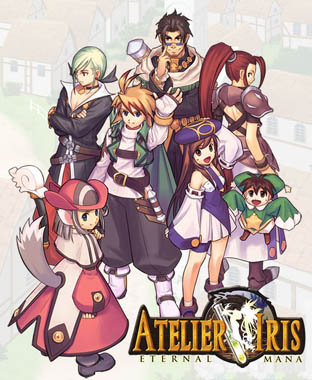
- Developer: Gust.
- Publisher: Various, but usually Nippon Ichi Software or Koei Tecmo.
- 19 core entries.
- May 23, 1997 (Atelier Marie: The Alchemist of Salburg)
- December 21, 2017 (Atelier Lydie & Suelle: The Alchemists and the Mysterious Paintings)
- Many, many side-games and remakes.
The Atelier games have been quietly (double, double) toiling (and trouble) away for many years, being the flagpole for Gust Co. Inc. and their predilection for cutesy anime games, which also includes Ar Tonelico and Blue Reflection. There's apparently been nineteen of the things according to Wikipedia, with many more side-games and remakes since then. If you're not familiar with the series, they tend to straddle the line between RPG and crafting sim, with many quests boiling down (literally) to creating items from alchemy. The RPG combat usually comes from having to go out into the world to find ingredients. For as generic as they are, I rarely find I have a negative word to say about them: they're pretty wholesome and relatively conflict-free, if that's your jam.
I've only played the two games myself - Atelier Iris and Atelier Iris 2, both for PS2 and both from a brief point in time when the series got a little more combat-focused - but I've owned a copy of Atelier Rorona for a while now. It's difficult to pick out where you should dive in, but they're generally split up by the worlds they inhabit - Salburg, Gramnad, Arland, Dusk, etc. - so going for the first games made in any of those settings seems like the best option.
Shining
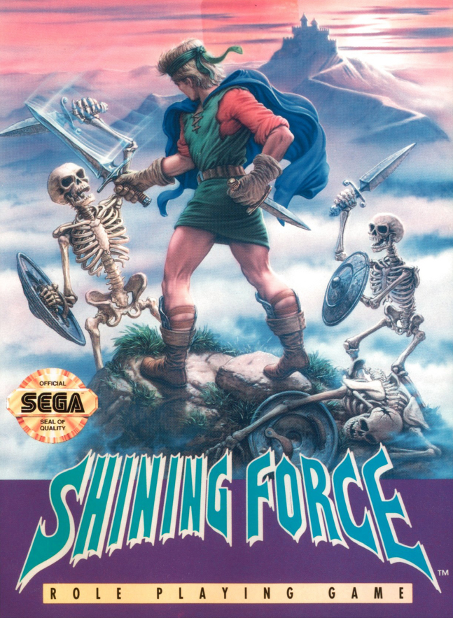
- Developer: Various, has included Camelot/Sonic!, Neverland and Media.Vision.
- Publisher: Sega.
- 17 core entries.
- March 28, 1991 (Shining in the Darkness).
- December 11, 2014 (Shining Resonance).
- About a half-dozen Gaiden games, and an equal number of remakes/enhanced editions.
Shining hops around genres, so it's difficult to nail down what counts as a "core" entry: Do you start with the first game to carry the Shining name, the first-person dungeon crawler Shining in the Darkness? Or go with the first SRPG, Shining Force, which is the genre people most commonly associate with the Shining brand? How about the many action-RPGs that followed, most of which are Japan-only? I've gone with my gut here, including every original game (no remakes or gaiden/side-stories) as a core entry.
I have very little experience with this series, both because I was a Nintendo kid and because so few of these games ever made it overseas. I've played Shining Force (technically, the GBA remake), Shining in the Darkness (thanks to the Genesis collection on Steam), and Shining Soul (a rare post-millennial Shining game with a localization) but that's about it. I recognize I should probably get on Shining Force II at some point, and I'm personally curious about the other dungeon crawler Shining the Holy Ark, but there's evidently a lot of them out there.
Tales
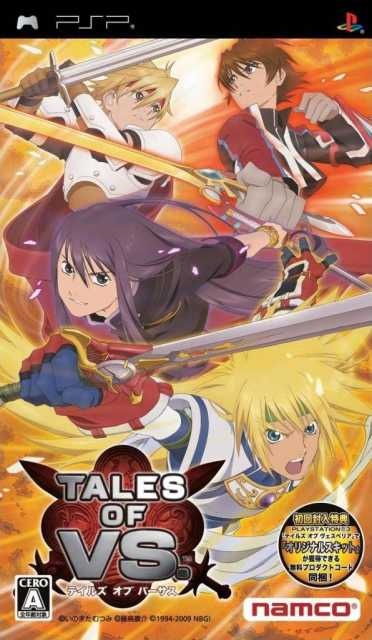
- Developer: Wolf Team, then Namco Tales Studio, and then Bandai Namco Studios.
- Publisher: Namco, and later Bandai Namco.
- 16 core entries.
- December 15, 1995 (Tales of Phantasia).
- August 18, 2016 (Tales of Berseria).
- 14 spin-offs/gaiden games, including Tales of the Tempest, Tales of Symphonia: Dawn of the New World, and Tales of the World: Radiant Mythology.
My beloved Tales series, the closest thing I have to comfort gaming that doesn't involve farming (Stardew Valley) or digging (Terraria). Tales has been going about its LMB system-enabled combat and anime shenanigans for a relatively short period compared to some of the other franchises on this list, but has still racked up a large number of core entries and offshoots in that time. It's impressive that they all have the same developer: those guys have just been churning them out for years. That's possibly why they all tend to feel very similar, but at least the overall quality level has been remarkably high so far.
The history of Tales localizations has been spotty at best, and until recently we generally only saw every other Tales game in North America (and fewer still in Europe, naturally). I believe I've played just over half of them at this juncture: Phantasia, Destiny, Eternia (PSP remake), Symphonia, Abyss (3DS remake), Innocence, Vesperia, Xillia, and Zestiria. Then there's Destiny 2 and Rebirth (both Japan-only), Legendia (never released in Europe), Hearts (I don't have a Vita to play it on), Graces, Xillia 2, and Berseria left to go.
Final Fantasy
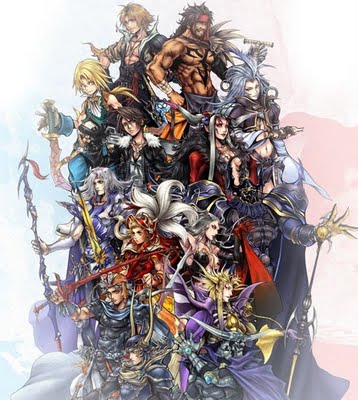
- Developer: Squaresoft/Square Enix.
- Publisher: Ditto.
- 15 core entries
- December 18, 1987 (Final Fantasy).
- November 29, 2016 (Final Fantasy XV).
- Over 30 spin-offs/sequels/gaiden games, including Tactics, Type-0, Crisis Core, X-2, XIII-2, and XIII-3.
Probably the first series people think of when asked to name a JRPG franchise that has been around forever. Despite how prolific Final Fantasy actually is, there's only the fifteen core numbered entries: sequels are considered to lie outside the main progression, unlike in other JRPG franchises where direct sequels are a little more common. I could count the XIV "A Realm Reborn" reboot separately, which might as well be an entirely new game from what I've heard, but I think Square Enix would prefer it if we simply revised history to make it the "real FFXIV" instead of whatever the unfinished mess was we got the first time around.
This is the JRPG franchise I personally have the most experience with, in part because Squaresoft (and Square Enix) have done a fine job bringing the series over to the west, and to Europe specifically. That wasn't always the case - Final Fantasy VII was actually the first core game Europe ever saw - but years of remakes and rereleases have rectified that misstep. Presently, the only core FF games I've not played are the MMOs (XI and XIV) and the most recent one, FFXV. The spin-offs, though? A wilderness of mobile games, crossovers, Crystal Chronicles sequels, the great Tactics games, and the first real Final Fantasy game Europe ever saw: Mystic motherfrickin' Quest.
Fire Emblem
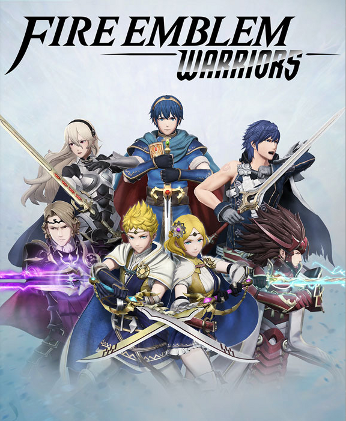
- Developer: Intelligent Systems.
- Publisher: Nintendo.
- 12 core entries.
- April 20, 1990 (Fire Emblem: Shadow Dragon and the Blade of Light)
- June 25, 2015 (Fire Emblem Fates)
- A lot of remakes, and a few spin-offs like Warriors and Heroes.
Beyond perma-death and the constant unpleasant FOMO feeling from knowing how easy it is to miss party members because you forgot to check the right hut on the right map, the main barrier I have with Fire Emblem is figuring out where to start with its immense 12-game catalog. Fire Emblem for GBA is a natural first port of call, as is the later breakout hit Awakening, but there's a lot of history in the 8-bit and 16-bit eras too. It's one of a handful of SRPGs to focus more on the "S" and less on the "RPG", where levels and starts aren't quite as important as playing certain classes against others to exploit weaknesses.
I've not been able to complete a single Fire Emblem, such is their stressful effect on me. I've dabbled in the aforementioned GBA Fire Emblem, its successor The Sacred Stones (received for free through the 3DS Ambassador program), and the first game, Shadow Dragon and the Blade of Light. I also took a cursory glance at the SNES games - Monshou no Nazo, Seisen no Keifu, and Thracia 776 - as part of that console's Wiki Project.
Dragon Quest
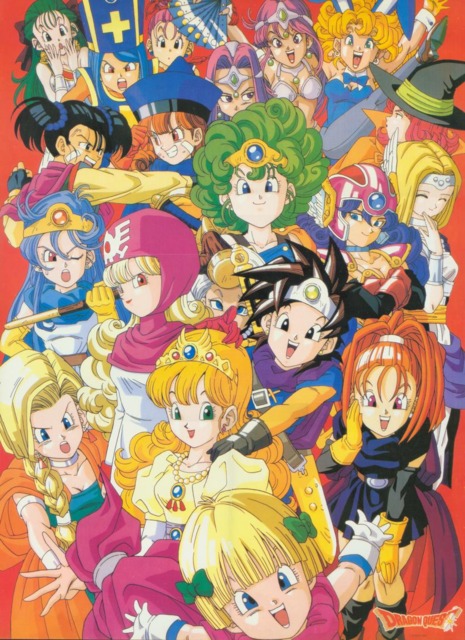
- Developer: Usually Chunsoft, but it's been Level-5 and Square Enix itself more recently.
- Publisher: Enix/Square Enix.
- 11 core entries.
- May 27, 1986 (Dragon Quest).
- July 29, 2017 (Dragon Quest XI).
- Over 20 spin-offs/gaiden games, including Monsters, Slime, Swords, Builders, and the first and third Mystery Dungeon.
For as busy and venerable as Dragon Quest is, it's only the sixth longest franchise on this list. Like Final Fantasy, it's happier to dabble in side-games, perhaps because the hype around new core entries tends to be that much more intimidating for its developers. We're still eagerly awaiting the eleventh core game over here - it's sounding like we'll be getting a Switch version, as well as 3DS and PS4 - but the entire franchise is pretty much available on portable Nintendo systems now thanks to a long chain of remakes.
I've not had much to do with the core Dragon Quest games, unfortunately. I've completed IV and VIII but burned out on the gigantic IX, and while I have no interest in X because it's an MMO I do intend to get into the others someday, ideally via their GBC/GBA/DS/3DS ports. I'm better acquainted with the spin-offs, having played the superlative Dragon Quest: Rocket Slime, and the fine Dragon Quest Monsters, Dragon Quest Swords, and the first Dragon Quest Heroes. I bet I'd have fun with Dragon Quest Builders also.
Some runners-up, which were left out because they had yet to pass ten core games as of writing:
- Squaresoft/Square Enix's Mana: Ten core games, as well as two remakes of the first game and a very recent remake of the second.
- Falcom Nihon's Ys: Eight core games, the most recent of which came out last year. There's several non-canon Ys IVs for some reason, a prequel (Ys Origin), and a few remakes like The Oath in Felghana and Memories of Celceta.
- Falcom Nihon's The Legend of Heroes: Technically eight core games, but the sixth game Trails in the Sky is broken up into three "chapters", the seventh Trails of Zero/Azure is broken up into two, and the eighth game Trails of Cold Steel is broken up into four. It's a weird franchise.
- Falcom Nihon's Dragon Slayer: Eight core games, but so many sequels/spin-offs of those eight, including The Legend of Heroes above.
- Game Freak's Pokémon: You could include all the different color variations separately despite the similarities between the intra-generational games, like the nearly identical Red and Blue, but it's wiser to think of them in terms of generations, in which case there's seven - Red/Blue, Gold/Silver, Ruby/Sapphire, Diamond/Pearl, Black/White, X/Y, and Sun/Moon.
- Squaresoft/Square Enix's Front Mission: Seven core entries, including the two "2089" mobile games, but not that weird action-based Evolved reboot.
- Capcom's Monster Hunter: Six core games, going 1-4 then Generations then World, but I might be mistaken because my eyes glaze over whenever I think about Monster Hunter.
- Media.Vision's Wild Arms: Six core games, including XF for PSP but not including the remake Alter Code.
- Capcom's Mega Man Battle Network: Six core games. Wait, there were six of these?
- Konami's Suikoden: Five core games and a few spin-offs, like Tierkreis and Tactics.
- Atlus's Persona: Five core games only, though the second was broken up into two parts. There's also those Arena fighters, the Dancing Night rhythm games, and mystery dungeon Persona Q Labyrinth jobbies.
- AlphaDream/Nintendo's Mario & Luigi: Five core games, and a recent remake of the first.
- Intelligent Systems/Nintendo's Paper Mario: Five core games, though the latter three stretch the definition of RPG.
- SCE's Arc the Lad: Five core games, and now Sony seems to be done with it?
- tri-Ace's Star Ocean: Five core games, and almost all of them have remakes.
- Capcom's Breath of Fire: Five core games, if only because I refuse to accept the existence of Breath of Fire 6.
- Atlus's Megami Tensei: Either four or six core games, depending on whether you start with the originals or the first Shin Megami Tensei, and a whole lot of spin-offs like Persona, Devil Survivor and Digital Devil Saga.
Talking of items of interminable length, let's peruse this week's blogging. Together.
- The Indie Game of the Week was the excellent Chroma Squad: a turn-based strategy RPG that riffs on team-based tokusatsu TV shows like Super Sentai and Power Rangers. You do everything from handling the fights to managing the finances of your fledgling studio to crafting everyone's costumes out of glitter and cardboard. The fights can be a little repetitive, since you rarely shift from your regular line-up of five heroes, but the sim aspect and the different conditions the director gives you for specific scenes helps break up the monotony. Overall, it's a pretty great truncated SRPG experience, that's let down only occasionally by a middling localization and a few visual glitches.
- It's the week where the Super Nintendo Entertainment Console gets its due with The SNES Classic Mk. II: Episode IV: Telling Tales, which covers Naxat's The Twisted Tales of Spike McFang and Wolf Team/Namco's Tales of Phantasia. The former is a top-down action-adventure game with a comic sensibility and a restrictive RPG levelling mechanic that kind of forces you to get on a boss's level before you try fighting them, and the latter is the confident debut of the Tales franchise, outlined in the JRPG segment above (and is partly the inspiration for that topic). Phantasia's also one of those rare Super Famicom games like Final Fantasy V that was never officially localized for that platform, but has seen localizations for other versions (notably the GBA remake). It was a little outside the scope of the project to get too deep into the lore of where these games come from - my criteria mostly judges their timelessness and originality - but there's some interesting backstory behind how the Tales series came to be, and how Naxat's would-be mascot didn't get the break he deserved.
Addenda
TV: Kono Subarashii Sekai ni Shukufuku wo! (Season 1)
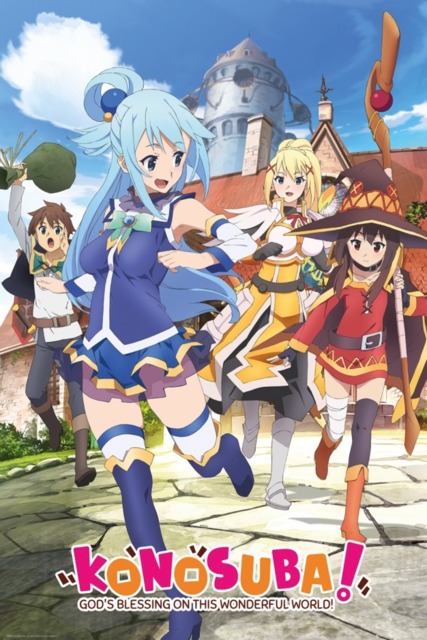
Yes, yes, I accidentally watched a season of a harem anime. In my defense, the reports I was getting about Kono Subarashii Sekai ni Shukufuku wo!, which is usually shortened to simply KonoSuba, is that it transcends both its incredibly thirsty harem anime premise and over-used high-concept idea of a regular goofus otaku brought to a fantasy world inspired by RPGs where he becomes an unexpected hero (which even has its own genre name, such is its ubiquity: "isekai"). To that I would say not really to the former and absolutely to the latter: KonoSuba's a lot of fun because the protagonist is forced into a straight man role almost immediately by the weirdos he is surrounded by, with various dead-pan internal thoughts reacting to whatever nonsense has just happened, and the rest of the show builds around the idea that maybe being around insane, horny women all the time is more mentally exhausting than anything else, and that being the chosen hero summoned from another world isn't the cushy gig it's made out to be.
The rest of the cast is filled out by: Aqua, a water-based goddess of death and rebirth that treated the fallen protagonist, Kazuma, with enough bored contempt that he vindictively chose her as his token "god-given perk" to carry into the fantasy RPG world of the anime after he dies unexpectedly in the real world; Megumin, a magician who refuses to cast anything but the most powerful spell in the world, despite the fact a single casting always wipes her out and means she cannot cast again for the rest of the day; and Darkness, a female crusader with some serious masochism kinks who takes to the role of meatshield with a little too much enthusiasm. While the intent of the heroes was to leave the opening town of low-level novices to pursue the requisite "Devil King" end boss, the entire first season is spent there, developing a secondary cast from its townspeople and running into frequent problems with even the easiest of quests due to the team's dysfunctional dynamic and terrible luck.
It's a slightly discomfiting show to watch - not because the rampant portrayals of female sexuality is a big turn-off, but because of how gratuitously it's thrown in your face like it's the only reason anyone would want to watch it - but the humor and storytelling is above average for this genre of anime, and I especially love that type of straight-man character in comedies who solidly refuses to take any bullshit lying down. I'm tempted to try the second season because the first ended on a cliffhanger, but I hope the writers pull a Game of Thrones or Spartacus by being more confident with the stories they want to tell that they don't feel the need to supplement it with frequent non-sequitur bare-ass T&A. The latter, well, I can always get elsewhere.
Movie: Black Panther (2018)
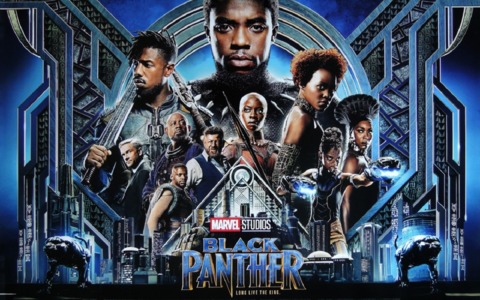
I was fortunate enough to check out the latest Marvel movie this week, helmed by Creed's Ryan Coogler and boasting an enormous cast of talented black actors in perhaps one of the best-realized standalones in the Marvel Cinematic Universe canon. These Marvel movies are uniformly fun and high-quality, but the worst ones have been the first solo movie for each respective hero, because so much time needs to be spent on developing their origin story and giving them some throwaway villain that gets summarily killed at the end so Disney doesn't have to give them the same crazy 20-year contracts that all the protagonists have for the sequels and crossovers and cameos to come.
However, it's usually the lesser known characters - the Guardians of the Galaxy, or Ant-Man, or Doctor Strange - that have the best solo movies because Marvel's less insistent on the directors to treat them with a sufficient amount of "respect", which is to say that their multimedia merchandizing potential are too important to let some quirky director with their own ideas for a superhero movie mess them up. Black Panther, one of the less prolific Avengers, is that type of character also: one that traditionally doesn't quite have the marquee presence of a Wolverine or Iron Man but still has a neat backstory as the King of Wakanda, a fictional technologically-advanced African nation that has hidden itself and its large supply of the powerful mineral vibranium away from an aggressive world of warmongers, and instead keeps tabs on everyone through a series of well-hidden spies with Bond-like gadgetry.
It's one of those spies, planted in Oakland, California, that triggers the events of the film after the plight of African-Americans during the era of the Rodney King riots affected the spy brother of the former Black Panther, T'Chaka, so profoundly that he was inspired to use Wakanda's technology to improve the station of non-Wakadans. That's a plot thread that opens the film but doesn't pay off until towards the end, and the rest of the time is spent establishing Black Panther's world without necessarily going overboard on exposition or explanations. We see how Black Panther gets his powers, how Wakanda's spy network operates, how people in his country live and its secretive relationship with the outside world, and the various members of his immediate social circle like his inventor sister, his moralistic love interest, his troubled best friend and fellow tribe leader, his quietly dignified widow mother, and badass royal bodyguard - all of which feels a lot more natural and less "here's a fun montage of the protagonist getting to grips with this whole hero business".
While there are a few negatives to take away - the CGI isn't always amazing, the vibranium tech occasionally borders on the magically ludicrous, and the middle of the movie meanders along before getting to the true storyline - there's a visual and narrative confidence in depicting one of the lesser known corners of the Marvel version of Earth, a strong dedication to one of Marvel's most important black heroes by a black director that ensures a considered, quality, "not just a paycheck" product the same way that last year's Wonder Woman inspired the same from its female director Patty Jenkins, and an actually decent villain in Michael B. Jordan's Erik Killmonger with his sympathetic motivations - all of which elevates the movie above most of the rest of the Marvel canon. I've yet to decide if it's my favorite Marvel movie - I think I generally prefer the goofier ones, because that's what superhero comics are all about for me - but there's no denying that it's way up on that list from a purely objective standpoint.
Game: The Legend of Zelda: Breath of the Wild (2017)
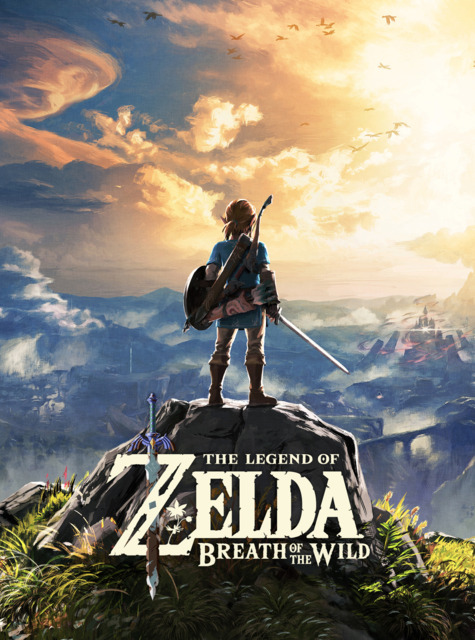
I'm almost done with the game now, with just one Divine Beast left to emancipate from Calamity Ganon's toxic influence and a handful of shrines left to plunder, but there's some small part of me that wants to keep playing after the story's done: this Hyrule is such a wonderful place to explore that I'm almost tempted to go after the Korok seeds (there's 900, and the means to find them is not exactly satisfying since I'm using an interactive map) or complete Link's Hyrule Compendium on all the animals, monsters, flora and equipment to be found across the world.
As with last week's appraisal, I find it difficult to know where to begin critically deconstructing the game. So much of what it does well is instinctual, from tackling cliffsides with Link's climbing gear to running through fields and deserts and jungles with all sorts of weather effects frequently causing you to adjust your loadout (it's a really bad idea to wear anything metal in a thunderstorm) or considering different routes if a mountainside is suddenly too wet to ascend. The moments when you run into a powerful Lynel or Hinox monster and consider whether you have the right gear or health levels to take them on for the valuable materials they drop, or hear the telltale music that signifies that one of the enormous dragons is floating by and then decide to chase after it. That you can come across an encampment of moblins, lizalfos or bokoblins and be given a number of ways to approach it, taking them out stealthily, or rolling gigantic rocks into their midst or detonating nearby barrels of explosive powder as a means to announce your arrival. The way you can find a new stable full of NPCs, pick up three or four new side-quests, and decide to dedicate the next hour of gameplay to solving the problems of the regular folk - through these I've been having to take pictures of the skeletons of giant beasts, catch elusive dragonflies, find a skeletal horse, and other unlikely objectives far from my usual goals of hunting shrines and Koroks wherever they might be hiding. Sometimes I decide I just need a lot of rupees, and go off to the mountain home of the Gorons to look for valuable ore deposits, or take a detour around some lakes and ponds to see if there's any sunken treasure chests therein.
The game's truest strength from the offset is the open-world Skyrim/Oblivion feeling of taking five steps from a settlement with one goal in mind before immediately finding an alternative that vies for your interest, which invariably leads to a dozen other venues with which to occupy yourself. It sounds like I'm confessing to some kind of attention deficit disorder (given that we just passed 3500 words for this edition of Saturday Summaries, I don't think ADD is my main problem), but that's the sort of game that Breath of the Wild is: a game with one real goal - defeat Ganon - that turns into four sub-goals - free the Divine Beasts - and from there naturally branches into dozens to hundreds more, some of which are delineated by the game's quest log and progress trackers while others are entirely of the player's own devising. I normally decry games with a lack of focus, but it definitely works in Breath of the Wild's favor.
